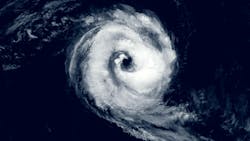Bomb cyclone makes landfall on west coast
A powerful cyclone known as a bomb cyclone made landfall in the Pacific Northwest and Canada’s British Columbia (BC) early on November 20, 2024.
It brought hurricane force winds with gusts up to 77 mph.
CNN reports that two people have died in the wake of the powerful storm, due to trees falling.
More than 500,000 homes and businesses in Washington were reported to be without power. Nearly 100,000 homes and businesses in BC were reported to be without power as well.
What is a bomb cyclone?
According to AP, a bomb cyclone is a term used by weather enthusiasts to describe a storm that has gone through the process of bombogenesis. This is the rapid intensification of a cyclone in a short period of time.
Bomb cyclones can happen when a cold air mass collides with a warm air mass, which can occur over ocean waters.
If a storm’s pressure decreases 24 millibars or more in 24 hours or less, it can be considered a bomb cyclone, said Stephen Baron, a forecaster with the weather service in Gray, Maine, in an AP article.
What’s the difference between a cyclone and hurricane?
According to an ABC article, hurricanes, cyclones and typhoons are the same weather phenomenon.
They’re all defined as horizontal, rotating, organized systems of clouds and thunderstorms that originate over tropical water.
They’re called different things depending on where the storm originates.
According to the U.S. National Oceanic and Atmospheric Administration (NOAA), hurricanes are tropical storms that form over the North Atlantic Ocean and Northeast Pacific Ocean.
Tropical cyclones are formed over the South Pacific and Indian Ocean, and typhoons are formed over the Northwest Pacific Ocean.
